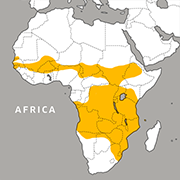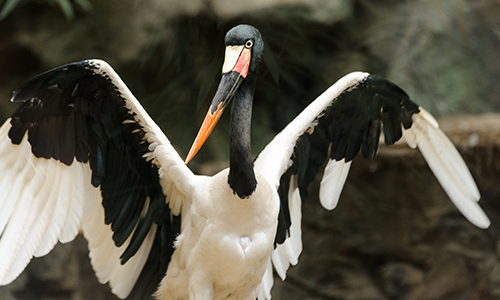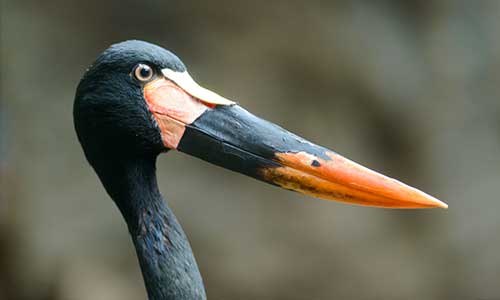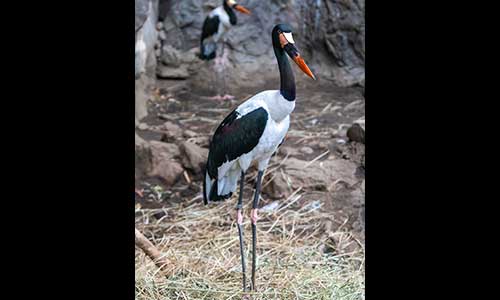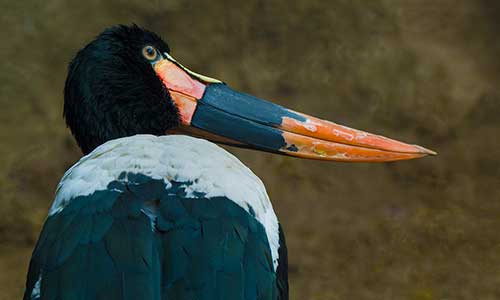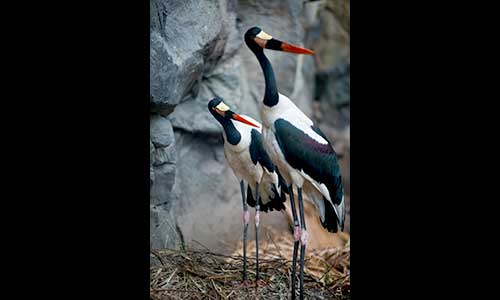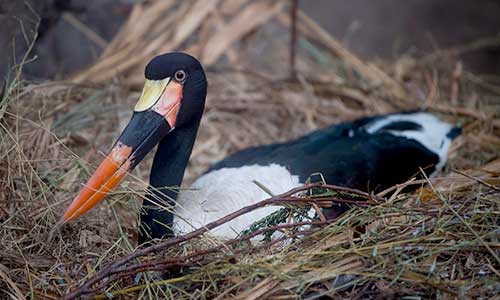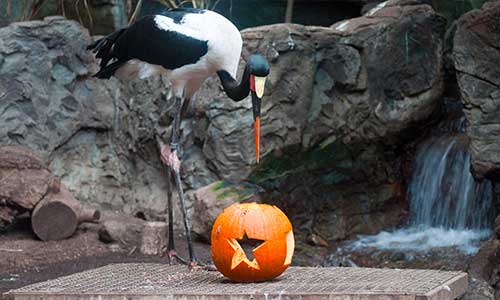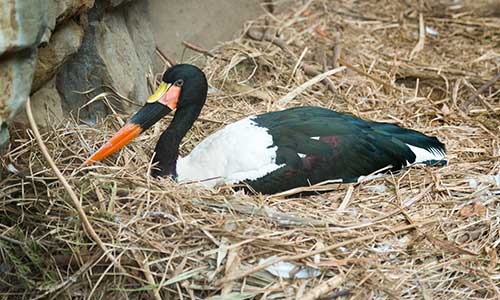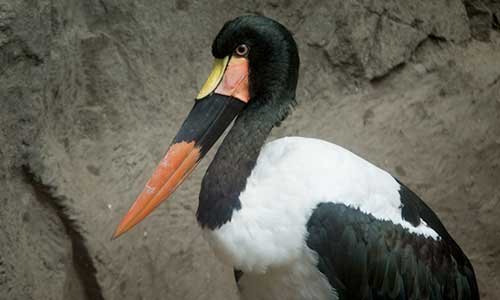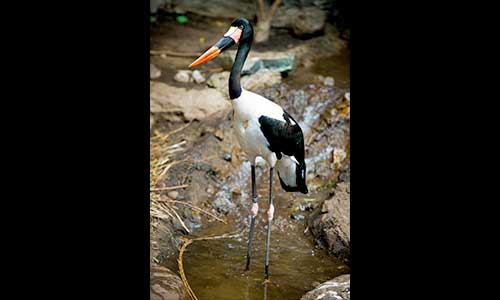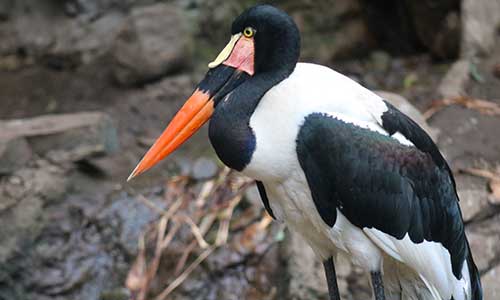Appearance:
These birds have striking black and white plumage, accented by a bright red bill. Female saddle-bills have pale yellow eyes, while males have darker irises.
Size:
Adults are 11-15 pounds and approximately 5 feet tall with a 7-8 foot wingspan. Males are generally larger than females.
Diet:
They are carnivorous and eat amphibians, fish, small reptiles, crustaceans and insects.
Reproduction:
These storks reach sexual maturity at three years. Both males and females perform courtship behaviors consisting of beak clapping, and ‘dancing’. They will jump and flap their wings, which resembles a dance. Egg laying typically occurs in late October. It is believed that males and female storks mate for life.
Gestation:
Females will lay 1-5 eggs per clutch, typically once a year. Eggs are incubated for 30-38 days. Chicks will fledge between 63-100 days. Incubation is done by both parents.
Behavior:
Saddle-billed storks are generally solitary, in pairs or with young offspring. They live in open spaces along wetlands or swamps, close to bodies of water so they have easy access to their preferred food sources. They are non-migratory birds, but will move to find food.
Role in their habitat:
They can be very territorial, especially when nesting or during breeding season. Both males and females perform courtship behaviors consisting of beak clapping, and ‘dancing’. They will jump and flap their wings, which resembles a dance.
Habitat/range:
This stork prefers marshland, riverbanks, lakes, ponds, and flood-plains especially bordering savannah. These storks can be found in most countries in Sub-Saharan Africa.
Median life expectancy:
Up to 38 years
Threats in wild:
Though still common and widespread, the stork's population is likely decreasing as a result of wetland degradation and agriculture development.
Fun facts:
- The saddle-billed stork is one of the largest species of stork.
- They are named after the yellow "saddle" across their multi-colored bill.


